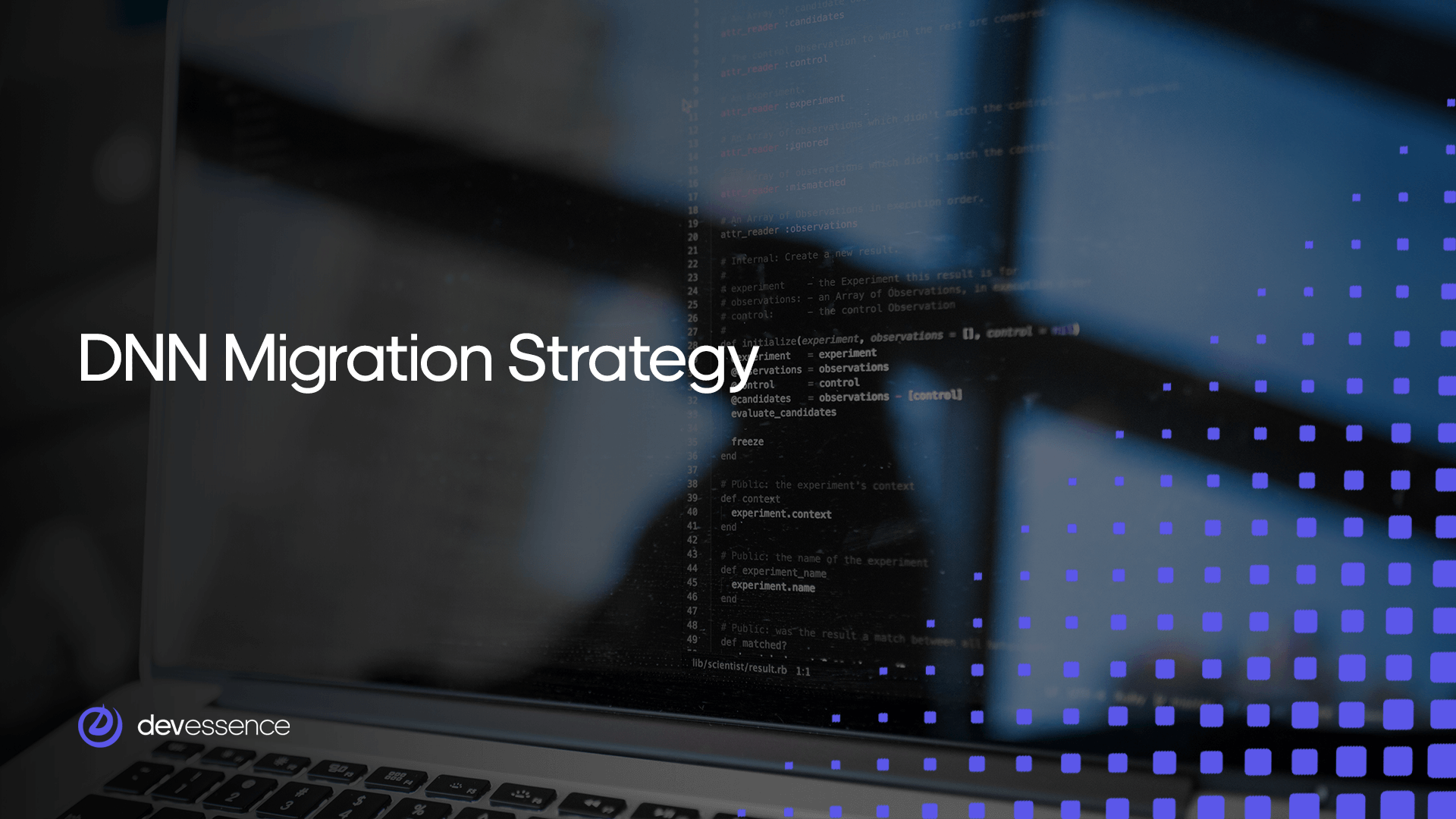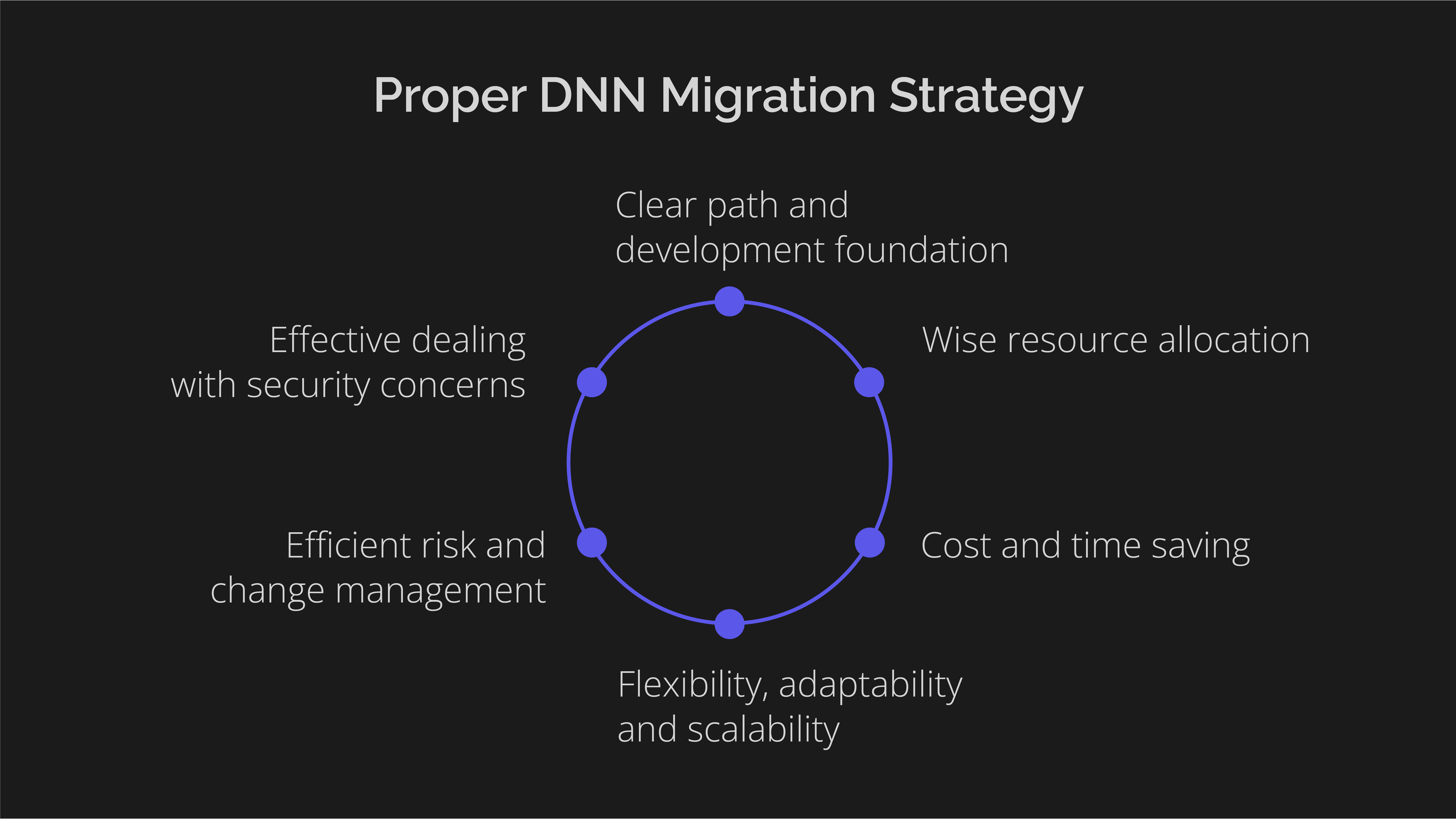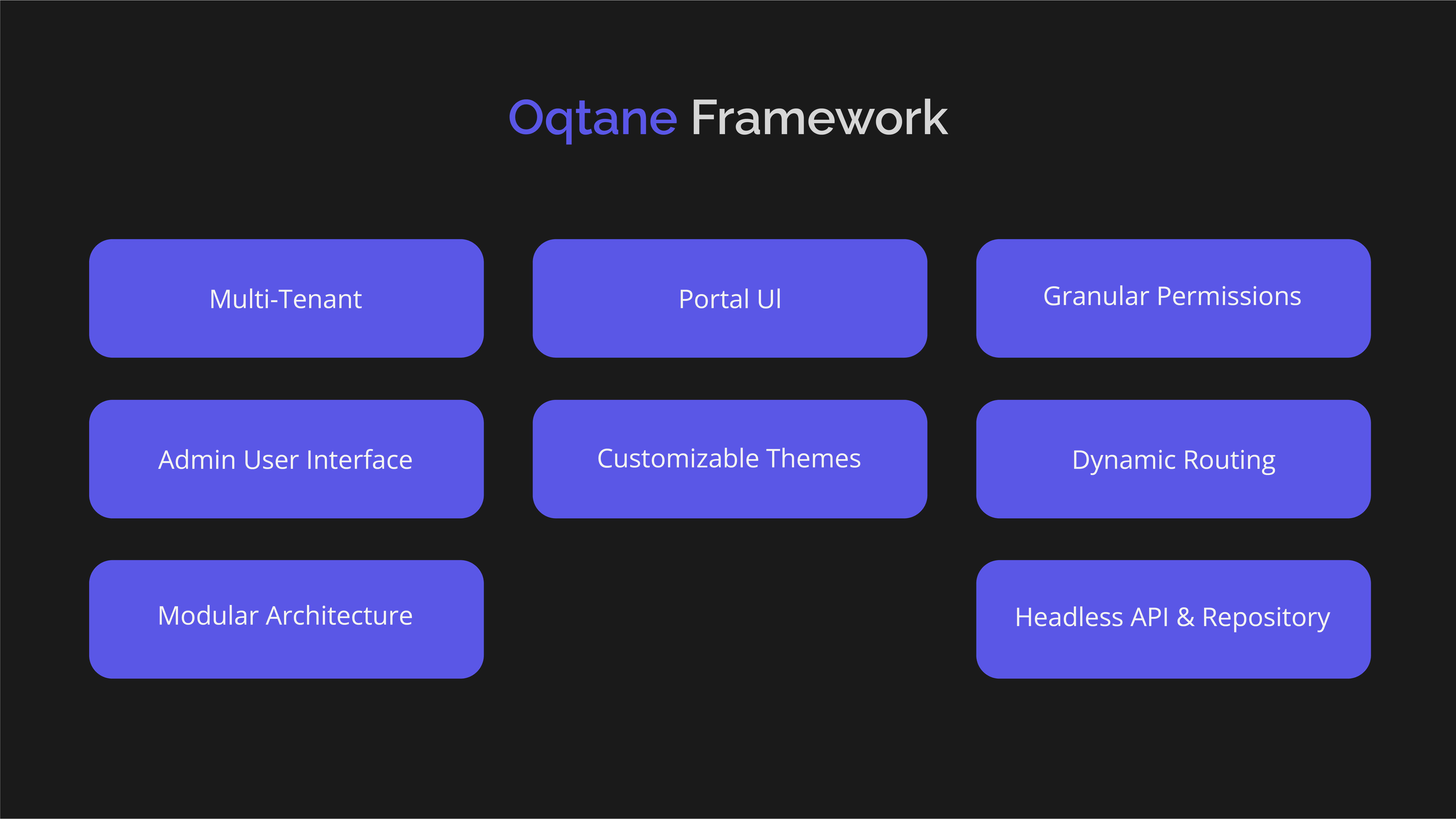Migrating from a legacy platform to a modern one is often a complex process that requires clear planning and management. And making the decision to switch can be very difficult, especially when the current platform is still serving your basic business needs. However, the longer you wait, the higher the risk that your business will face a disruption due to the legacy characteristics of the platform and you will have to settle for a less than optimal outcome.

DNN is a content management system for the .NET platform, which has been around for more than 2 decades. Based on its commercial open-source background, it was a widely adopted and reliable option for many enterprises, but today it’s an aging platform, built on legacy technology.
In our new article we will discuss migration as a strategic move to align with contemporary business demands, leverage cutting-edge tools, and ensure sustainable development. We will also help you to determine the most suitable path for your migration journey.
Why Migrate from DNN?
The adoption of DNN started to decline not long after Microsoft introduced MVC in 2009, and by 2014, the platform was facing some significant adversity and was no longer considered relevant among Microsoft software developers.
DNN Corp, the official steward of the DNN platform, was acquired in 2017 by ESW Capital, a private equity firm which specializes in consolidating later stage enterprise software companies. DNN Corp was subsequently dismantled and dissolved, as its acquirer had no intentions of investing in the platform's future development or potential.
In 2019, Microsoft made a significant announcement, stating that the release of version .NET 4.8 marked the conclusion of ongoing development for the .NET Framework. While it remains serviceable, the .NET Framework has become a legacy platform with no further evolution.
The reliance on legacy behaviors and the inability to incorporate new technologies within the DNN environment are key factors driving the decision to migrate. Microsoft's shift to .NET Core further emphasizes the necessity of adapting to stay relevant.
Moreover, DNN is a platform with no clear leadership or management team and, consequently, no clear strategy or vision. As technology has advanced, mature software products like DNN exhibit legacy behaviors and limitations, posing significant challenges for transitioning to a modern technical architecture.
Another thing to consider is the number of resources who are skilled with DNN. When a platform starts to decline in growth and development, the availability of skilled resources decreases as well. As a result, they become more expensive and less accessible, which is a huge risk for business.
Cyber-security is a constant concern and legacy software is often susceptible to cyber-attacks and ransomware, which have the potential to cripple your business operations. In addition, recent legislation has impacted the usage and storage requirements for personal information. So, businesses often need to readjust their systems to adhere to the new regulatory requirements.
While these limitations may not immediately impact the everyday usage of the product, concerns arise over time regarding the potential lack of support for underlying technologies and the product’s ability to innovate in alignment with contemporary business scenarios.
So, despite the fact that DNN was a good option for enterprises in the past, it is now very important to think about your future migration approach. DNN's foundation is based on legacy technologies, which makes further evolution and integration of new technologies very difficult. Each platform has its own lifecycle, and DNN is not an exception. You will have to migrate eventually.
If you make this decision now, you will have plenty of time to plan the process and allocate resources wisely. Plus, you'll be able to manage risk and make your migration run smoothly without unforeseen challenges or changes.
So, it is better to do so sooner rather than later. Otherwise, you can find yourself in a reactive situation with no viable plan for the future. You’ll have to deal with unpredictable risks and be unable to manage changes. This, in turn, will require allocating more resources and funds for migration which will still not guarantee success.
Considerations for migration
- Legacy behaviors – legacy behaviors within DNN can impact the flexibility and productivity for developers and end users.
- No future potential – DNN Corp doesn’t exist anymore, and ESW Capital is trying to extract as much profit as possible without investing into the platform's future.
- Technology evolution – the need to adopt new technologies, often incompatible with DNN, drives the need for migration.
- Cost and decline – over time, mature platforms may incur higher maintenance costs and witness a decline in popularity, necessitating a shift to more sustainable solutions.
In essence, the decision to migrate from DNN is based on ensuring continued innovation in response to contemporary business demands.
How to Move Forward?
To begin with, we have to think about product migration approaches – strategies for transitioning a software product from its current state to a new environment, platform, or architecture. These are often referred to as the 4 R’s - Replatform, Refactor, Rearchitect, Rebuild. Let's take a closer look at them.

Product migration approaches
Replatform
Replatforming is migrating a product to a new platform while making minimal modifications to the code. The goal here is to adapt the application to a new environment without fundamentally changing its architecture. In other words, this approach aims to take advantage of the new platform without a complete overhaul. An example might be migrating content from one CMS to another (if each CMS has comparable features).
At the same time, there is a risk of compatibility issues that need to be carefully managed. You also will be limited in the improvements you can implement since the goal is to minimize changes.
Refactor
Refactoring is all about optimizing the existing codebase. This approach attempts to minimize changes to the overall architecture as well. The goal here is to enhance or update the codebase while preserving the existing functionality.
Refactoring has many pitfalls. Firstly, modifying any aspect of a software application may lead to unforeseen dependencies, potentially causing integration issues. Refactoring also might not address all performance or scalability issues if not done comprehensively, so the migration process will require more effort and, accordingly, more resources.
Rearchitect
Rearchitecting is a more comprehensive approach with a focus on finding new and better capabilities to improve the application. It involves a significant shift in the code to take advantage of modern technologies, frameworks, and architectural patterns. The aim here is to improve the overall software design and capabilities.
However, rearchitecting is a significant undertaking and can introduce complexity and risk, potentially impacting the system's stability during the transition. Moreover, the time and resources required for a complete shift in architecture will likely extend the migration timeline.
Rebuild
The rebuilding approach involves creating a new application from scratch. While the functionality and scope may remain similar, the development starts anew, often using updated technologies, frameworks, and best practices. This approach is a good option when your product needs radical transformation, and the existing codebase is obsolete or difficult to maintain.
Building a new application from scratch is resource-intensive and will require significant time and investment. Without sufficient oversight from business stakeholders, there is a high risk of overlooking certain features or business logic present in the existing application during the rebuilding process. Also, migrating data from the old system to the new one can be complex and may require careful planning, so you'll have to find someone who can do this for you or guide you in this process.
The proper migration strategy: why is it so important?
Generally speaking, a clear strategy is your primary guide and basis for migration. Without such a foundation, a business faces unpredictable risks and challenges and has no tools to deal with them.

The right strategy is your key to the proper resource allocation and cost savings because it defines a clear list of actions and migration steps. You save resources simply by not wasting them on unnecessary things.
In the case of a DNN migration, several particularly important points are worth paying attention to.
- Proper migration strategy helps to deal with security concerns. Aging systems like DNN have vulnerabilities and outdated security protocols. Your strategy must include ensuring better security measures and protection against potential cyber threats.
- It is a way to ensure performance enhancement. A well-formed migration strategy allows you to leverage performance improvements and optimizations to create a more efficient and responsive system.
- Migration strategy provides an accurate list of new features, functionalities, and capabilities. This is very important for determining the path of future product development and ensuring alignment with modern business requirements.
- It is a way to ensure scalability and flexibility. As your business grows, it needs to change. A well-planned migration strategy ensures that new solution can scale to accommodate increased traffic, data, and user demands.
- Solid migration strategy = efficient risk and change management. A strategic approach to migration planning helps you conduct an in-depth analysis of all possible risks and opportunities and, as a result, be prepared for them.
- It can include precise integration planning. Migrating provides an opportunity to integrate with newer technologies, APIs, and third-party services, enhancing the overall functionality and connectivity of the system. The right strategy allows you to choose the optimal options based on the specific requirements and needs of the business.
As you can see, it is strategic planning that helps to avoid unplanned expenses and carry out the migration on time. A clear strategy is what you and your team will rely on throughout the change process, so it is worth special attention.
Crafting a proper migration strategy is a complex process. It depends on many factors and changing requirements, so engaging with a professional services firm who is familiar with this problem will be very useful. We can help you to choose the most suitable approach and create a proper DNN migration strategy. With our expertise and boutique approach, we offer a customized journey designed exclusively for your requirements. Let’s talk
DNN Migration Strategy: What Are the Options?
Refactoring is not a practical option for legacy applications as you will still be limited by the legacy foundation it is built upon. Rearchitecting or rebuilding will consume significant time and expense to create a solution, which is comparable in functionality. Replatforming often sounds simple but will be dependent upon the capabilities and cost of the platform you choose to utilize.
Let’s consider some of these options in the context of a DNN migration.
Option 1. Moving to a totally different CMS
In some cases, you may wish to consider choosing a completely new CMS to manage your content management requirements. This replatforming approach is an effective option, but it has its challenges.
First, developers and users accustomed to the DNN environment will need time to adapt. In addition, during the migration process, you will face completely different technologies and approaches. And very likely, the most challenging issue you will face is the migration of your existing data and content assets. All this complexity requires more time and costs to achieve a result.
Option 2. Rebuilding from scratch
This is an excellent option for enterprises needing greater flexibility and tailored functionality. In this case, the migration process requires a comprehensive understanding of both the existing DNN platform and the new custom solution.
With rebuilding, you can get more control over the tech stack and optimize resource utilization based on changing requirements. Your development team can use tailored security measures based on your specific requirements and implement patches and updates promptly to safeguard against potential risks.
However, it is worth understanding that creating from scratch is very expensive and time-consuming. This approach gives more freedom in the choice of technologies but requires much more effort and expertise.
Option 3. The middle ground – Oqtane
Oqtane is a CMS and modular application framework which is essentially a functional rebuild of the DNN platform on .NET Core that uses modern architecture and technologies. With its three core pillars of speed, extensibility, and productivity, Oqtane provides a future-proof solution for developing high-quality, feature-rich applications within the Microsoft .NET environment.

Why consider Oqtane?
- Oqtane's data model is based on DNN’s, providing an intuitive data migration option for your data and content assets.
- Multi-tenancy, modular architecture, a fully dynamic page compositing model, extensibility via third-party modules and themes, and much more are among its strengths. These aspects are all very familiar to DNN developers and users and are not common industry characteristics for other solutions.
- It has a community comprised of open-source developers and commercial vendors that offer a diverse range of products and services.
- Oqtane aligns closely with Microsoft's recommended development approaches for modern applications, leveraging native solutions from .NET Core. This ensures consistency, reducing barriers to entry for developers and providing long-term support.
This is the middle ground between moving to totally different CMS and building a new solution from scratch. Oqtane has taken all the best of DNN and combined it with the latest practices, technologies and development approaches. That is why it makes the transition much easier, smoother and faster.
Wrapping Up
The decision to migrate from DNN is not just a technical necessity but a strategic move to align with current and future business demands within sustainable development. The aging nature of DNN, coupled with its declining support and inability to incorporate new technologies, will continue to elevate its risk profile over time.
In this context, a clear migration strategy is critical. It serves as the foundation for the entire migration process, guiding businesses through a complex transition and helping them avoid unpredictable risks and challenges. A well-formed strategy helps you to address vulnerabilities and outdated security protocols, utilize performance improvements and optimizations, align the platform with modern business requirements, and prepare for potential challenges.
For DNN, options like moving to a different CMS, rebuilding from scratch, or adopting Oqtane provide businesses with diverse choices based on their needs and preferences. The choice is not easy, but it is crucial for a successful migration journey. Professional consulting services are invaluable in making this transition, and we stand ready to assist you in choosing the most suitable option and crafting a customized DNN migration strategy. Let’s talk